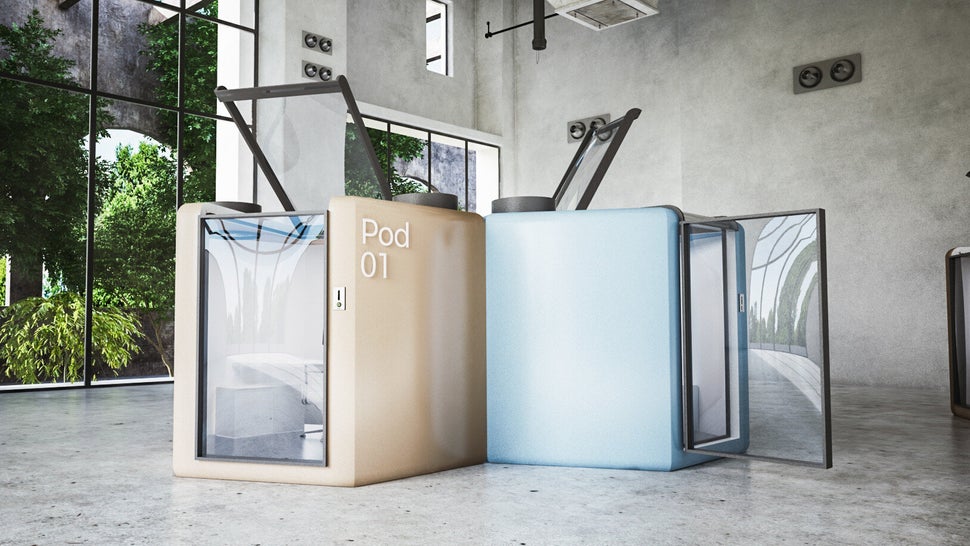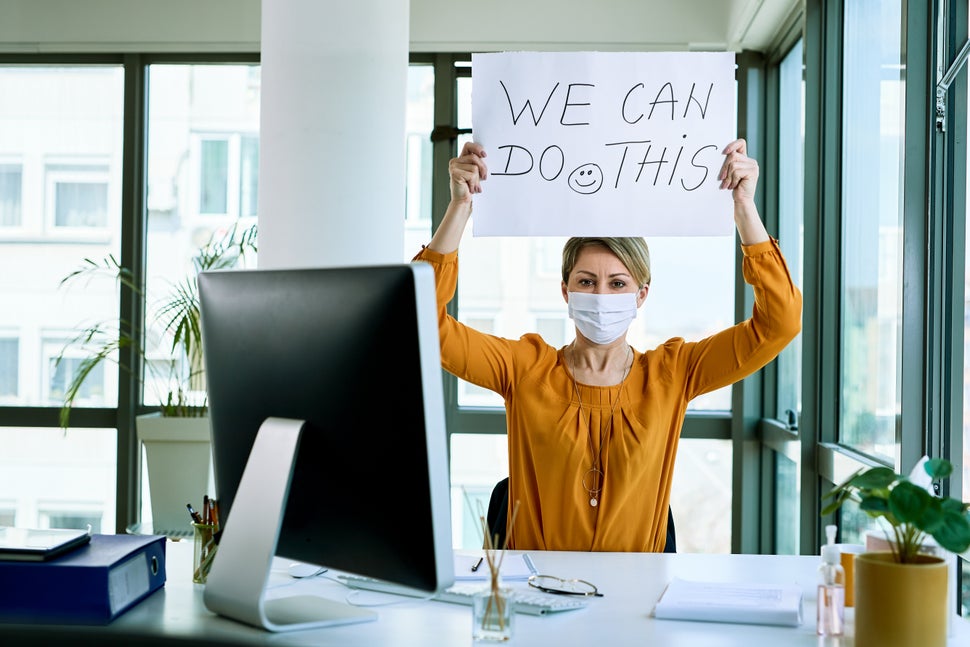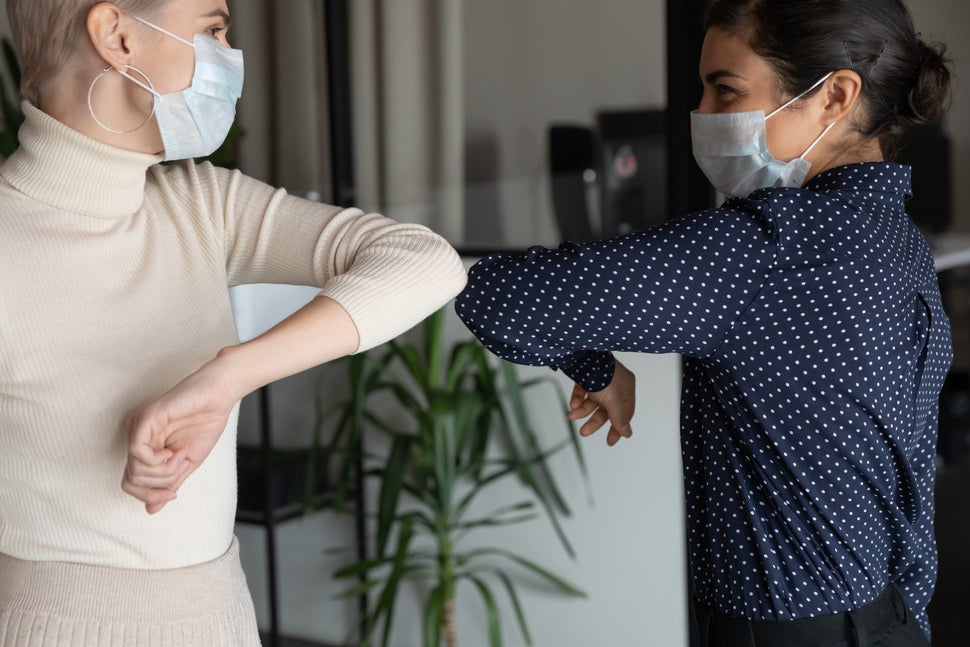Airtight isolation pods with inbuilt ventilation systems and air purifiers. Desolate open-plan offices with satellite groups rotating shifts to ensure social distancing. Designated staffers enforcing new health and safety rules, such as sniff-tests.
Is this the future of your workplace? It depends on who you ask. The lockdown has provided ample opportunity for designers and architects to indulge in a bit of blue-sky thinking about how we will work in a post-Coronavirus world. The more out-there responses to the question can feel futuristic and faddy. At first glance, Qworkintime’s individual airtight pod look potentially more anxiety-inducing than practical, least of all actually desirable for your working day.
But away from the high-tech solutions only accessible to the highest-grossing companies, the main takeaway seems to be that home-working culture has been validated by the lockdown – and is here to stay. Why spend hundreds of thousands on work pods when your employees could just... stay at home.

While some workers will need to return to the office, of course, brash PR moves like the one from Twitter, which declared staffers could work from home – forever, may be attention grabby, but are symptomatic of a wider shift in mood and culture. Now that so many of us have proven – unsurprisingly – that we can work from home, why shouldn’t we?
Experts such as Kathryn Bishop, foresight editor at The Future Laboratory – a company that says it has ‘future proofed’ more than 1,000 businesses in 50 countries – suggests the workplace post (or even mid) Covid-19 will likely be defined by people’s desire to return, rather than the necessity.
And while social distancing in offices may not be ideal, the challenge of engineering the ultimate socially-distant space has been a good excuse to think about what constitutes a good office anyway – not just practically, but for our mental health and happiness.
“The workplace will likely be defined by the desire to return, rather than the necessity.”
“Open plan has completely failed,” Bishop reflects on our Zoom call, gesturing around The Future Laboratory’s open plan office and noting the irony.
“People aren’t very productive. They don’t feel they have any privacy. It’s noisy. On the one hand, people quite like to understand the delineation between their employees and their colleagues in the office, so they know who the managers are [while thinking] ‘Is there somewhere where I can go and work privately as well?’”
Big questions around the future of work can produce debates that feel vague, existential even, and innovation becomes an equality issue when it comes to expensive high-tech solutions – so perhaps it’s best to start with the simplest practicalities that will affect offices large and small.

Health and hygiene, rather than shiny new tech, are the key concerns, says Bishop. That means “setting up key guidelines for making sure your employees know what the protocols are going to be, whether that’s hand sanitisers and a lot more consideration to the basics, hygiene standards; social distancing in the workplace, thinking about access, staggered hours.” These are the priorities.
“We’ll also see greater attention paid to the wider mental wellbeing services that are going to be offered to employees [such as} greater access to remote therapy services, with employers realising that is part of their duty of care to staff.”
Once essential interventions have been made to the office eco-system (Bishop warns a shortage of supplies like plastic dividers to place between desks could delay some workplaces being Covid-ready), the biggest challenge for employers of all sizes is the age disparity of the workforce in 2020 – and beyond.
“We’re going to have everyone from Gen Z to the last of the boomers, so we have to be considerate that not everyone’s going to have the same desires, expectation or needs,” she says.
This may produce the successor to open plan offices: new, multi-purpose workspaces suited to – no, really – actually getting work done. When it comes to the ‘perfect’ space, Bishop says “the ultimate thing is to give people choice”.

Much of the Future Laboratory’s research has focused on “phased” workspaces. “You start with this social entrance space, then move into more of a sit down meetings space, what is currently the cafeteria break-out, then there might be some quieter banks of desks or open plan, and then you have the private booths or bookable offices,” says Bishop. The idea is for workers to “phase” through the office depending on the type of work they want to do.
“I think again it’s more reflected in the workers themselves feeling empowered to make the choice around where they work rather than being told, ‘that’s your desk and that’s where you have to sit all day,’” she says.
How much of a variation this is on ‘hot-desking’, a trend employers increasingly favour for cost-saving reasons – but that frustrates many employees – remains to be seen. Certainly, it suggest the need for a lot of anti-bacc.

Key urban hubs such as Canary Wharf, the City in London and Salford Quays in Greater Manchester don’t necessarily meet the needs and desires of modern workers. Given how skyscrapers and mega-offices rely heavily on the use of lifts for access to higher and mezzanine floors, businesses may be looking into localised branches of offices to service smaller pools of workers.
Micro offices could be dotted throughout different parts of one city. A London-based company might have two smaller satellite offices in Farringdon and Brixton, say, rather than one central space. As Bishop says: “That allows people not to have to travel into town and be in these potentially big germy spaces.”
Looking further into the future – and at the opposite end of the scale to the micro-office – is the quasi-utopian idea of an “all-in-one experience”.
Brands with a single, central hub could see their workers using the office almost purely as a social space, or just for meetings, perhaps primarily with colleagues from abroad. It might even double as a hotel. “It does sound a bit dystopian to some people,” Bishop acknowledges. ”Others are like: ‘Yeah that sounds wicked. I can check in on my colleagues as and when.’”
But aren’t we getting ahead of ourselves? What about those of us not working for multinationals that can afford to invest in design and architectural triumphs?
Within six months, many of our workplaces will start inviting us back to work on rotation, in small groups, suggests Bishop, who believes that in five years the idea of being ‘forced’ into the office could be redundant across the country.
In the meantime, more traditional companies keen to get back into the office now rather than experiment with a sustainable work-from-home culture will have to streamline new systems with employees becoming fluent with strict workplace rules to eliminate risk.
Bishop imagines a world of staggered office working amid Covid-19 later this year. “One day a week your team is in the rotation office, let’s say every Tuesday, and the next day a different team is, and it’s obviously cleaned in between.” Smaller companies may capitalise on the situation by renting the office out. “The space may not even be limited to just one company using it.”
Beyond practicalities and swish new office equipment, perhaps the most significant reason for rethinking the office as we know it – only invented in the 1950s – is happiness. Countless studies show, perhaps obviously, that with happiness comes productivity. This is not new information to employers but given the time for introspection we’ve all been afforded during this lengthy lockdown, they may find this glaring truth increasingly harder to ignore.
“I think a lot of people are looking to their employers for direction,” says Bishop. “But they’re understanding that a lot of this is down to them as individuals to empower their future and guide the way they want to work” – rather than the shape of your nine to five being dictated by your employer or boss.
We’re here to guide you through the coronavirus pandemic. Sign up to the Life newsletter for daily tips, advice, how-tos and escapism.